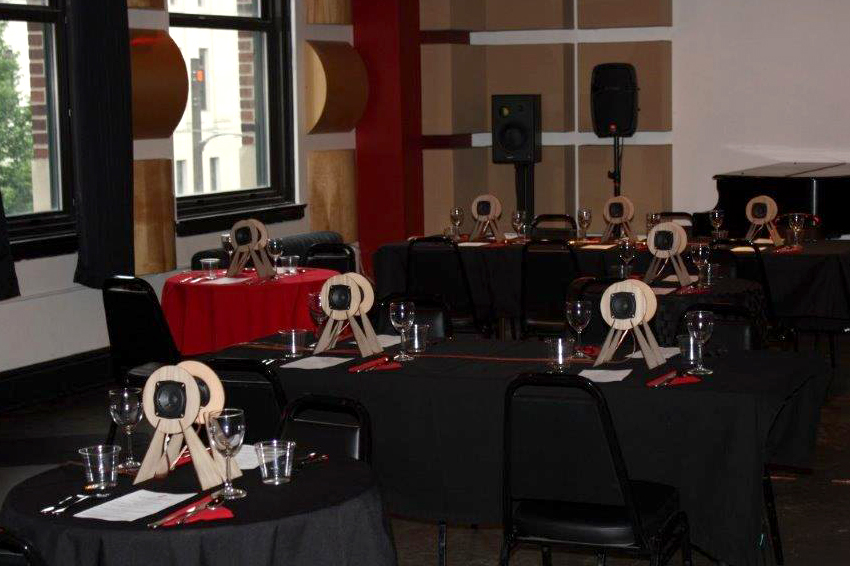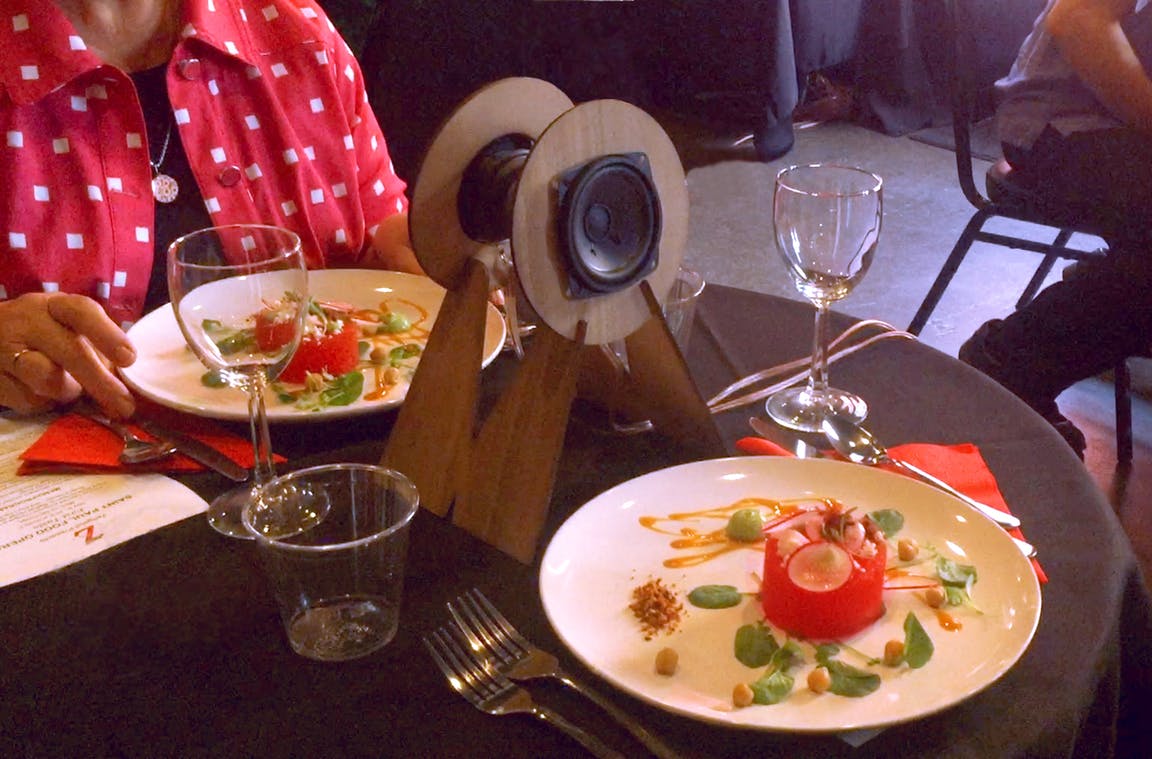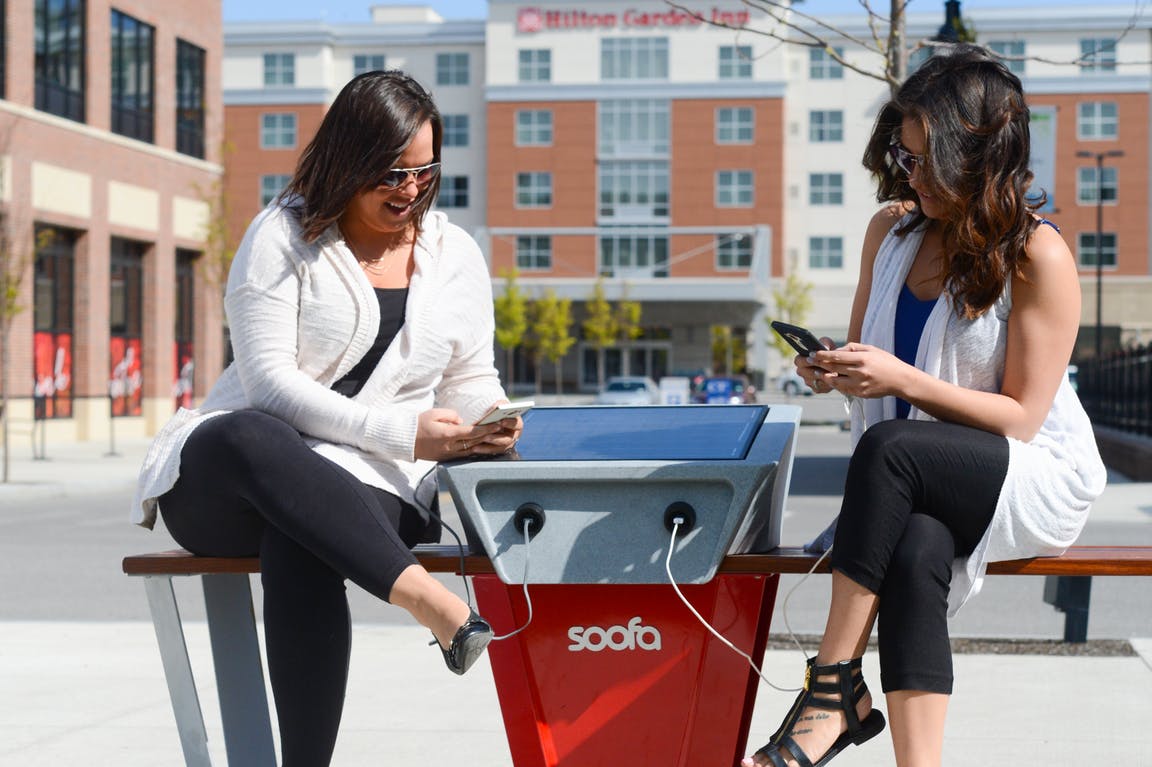
Connecting communities through unexpected pairings
At a casual glance, Jutta Friedrichs and Ben Houge might appear to be something of an artistic odd coupling. Friedrichs works primarily in urban design, while Houge is a musician with an extensive background in video game composition. With two concurrent Knight-funded projects in St. Paul, though, the couple is proving that their disciplines go together like classical music and fresh-baked bread, or park benches and cellphones. You know, those classic pairings of the arts world.
Although their endeavors are separate, the couple provides administrative support to each other’s work. Once they get talking about their projects, the common ground starts to become a lot clearer. Friedrichs is a co-founder of Soofa, a Massachusetts-based company that produces “solar-powered urban infrastructure that’s connected to the cloud.” Knight Foundation’s Enterprise Fund invested in the company. This summer Saint Paul’s Hampden Park became home to Minnesota’s first Soofa station, a park bench that packs some extra punch. “It provides solar-powered charging for devices,” said Friedrichs. “You can sit on the bench, bring your USB cable, plug in and charge your phone.”
The appeal is obvious: Who among us hasn’t felt the chilly panic of being out and about with our phone battery at 3 percent? But Friedrichs said the aim is as much about community as utility. “One of the headlines we wanted to use is ‘the 21st century water cooler.’ People used to gather around the water cooler for conversations, or in olden times, the well. Now everything is about powering your devices.” In an age of consternation about screens and devices isolating us from other humans, Soofa hopes to use them to bring people together.
The Soofa project also gives communities an injection of today’s most valuable resource: data. “We’ve developed the technology so we can track the energy that gets generated, and also how many people are charging and how long people charge,” said Friedrichs. Soofa recently partnered with the New York City Parks Department to measure mobile activity within parks. “It can count how many people are walking past at what time and understand the activity level of an area at certain times. That’s eventually useful information for whoever buys the benches for use in parks, so they can know what parts are getting used more.”

Data and technology also play surprisingly large roles in Houge’s Saint Paul Food Opera, opening this October at Studio Z in Lowertown. “I’ve been doing this project the last couple of years to find ways to link music and food in a completely synchronized way,” said Houge. Working with the Zeitgeist chamber ensemble, he has crafted a multi-course dinner menu that pairs fine foods from local restaurants and bakeries with original musical compositions. “I’ve developed some software to be able to route music to speakers at each table in the dining area, so that people are hearing the music that corresponds to the dish as soon as the food arrives. The music is programmed so it will continue indefinitely until people are finished with the dish.”
Much like Soofa’s intersection of art, technology and community, the Food Opera pulls from all corners of the creative arena. “I originally approached it in the same way as I might approach an image or an animation, how I might do some [music] to accompany a video clip,” Houge said. “For example, one of the first pairings I came up with was a foam dish that I paired with wind chimes, because I think there’s something texturally that works the same way. With wind chimes you have a bunch of pieces of metal that are sort of banging together, and you’re not really looking at the individual impacts, but more the resulting texture. I think the same thing is true if you’ve got a foam, which is little individual bubbles that are popping.”
“There’s a lot of shared vocabulary in cooking and music,” added Friedrichs. “Terms like picture and color, temperature, tone, palette.” The Food Opera’s reach even extends to the scientific, with Houge checking his work against psychological studies of how our senses are linked within our brains. Researchers have found evidence that high-frequency sounds make things taste sweeter or more sour, while low-frequency sounds intensify bitterness, all conclusions supported by Houge’s experiences with pairings.
“I’ve been fascinated by the way that chefs and musicians and composers grapple with very similar types of creative problem-solving, even though the media are different,” said Houge. He and Freidrichs agreed that the comparison could extend to their own seemingly disparate artistry. “We’re sort of doing similar things,” said Houge. “These projects are ways to make connections in the community.”
The Saint Paul Food Opera runs Oct. 6-8 at Studio Z in Lowertown. Visit zeitgeistnewmusic.org to make reservations. Soofa benches can be found in 18 states and 5 countries, including the recent installation in St. Paul.

Recent Content
-
Artsarticle ·
-
Artsarticle ·
-
Artsarticle ·

